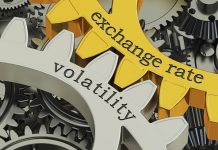In this weekly segment I am going to bring to you my Top Ten of everything trading related; from trading myths, trading mistakes, trading books, trading websites, trading hacks – I am sure you get the picture.
I want to kick this segment off with an introduction to what I consider my top ten Trading Books that aren’t related to trading strategies or set ups, but focused specifically on risk and psychology, as the defining moment in my trading career was moving from part time gambler to full time student of risk and psychology.
1. Market Mind Games: A Radical Psychology of Investing, trading and Risk – Schull
This work provides a pragmatic strategy to unify your mental tactics with your trading strategy, enabling the trader to make better decisions by navigating the complicated relationships between reason, analysis, emotion, and intuition.
2. Manias, Panic and Crashes – Kindleberger and Aliber
An excellent and insightful read on the way that the mismanagement of finances and credit has been the catalyst for financial collapses throughout history. The book covers the full spectrum and anatomy of crises, speculative manias and the lender of last resort scenarios. This work does a first class job of capturing the turbulence of the financial markets.
3. Mistakes Were Made (But Not by Me): Why We Justify Foolish Beliefs, Bad Decisions and Hurtful Acts – Tarvis and Aronson
An in depth investigation into how the brain is hardwired for self-justification. When we make mistakes, we must endeavor to calm the cognitive dissonance that impacts are feelings of self worth, hence we create fictions that absolve of us of personal responsibility, restoring are feelings of self belief, a belief that often keeps us on the wrong rinse and repeat the course.
4. Thinking, Fast and Slow – Kahneman
This masterpiece defines the two mental systems that drive our thought patterns. The first system, fast and intuitive and the Second system slower and more logical. Kaheman exposes the extraordinary capabilities and drawbacks of both systems, demonstrating the impacts of loss aversion and over confidence, the challenge of properly framing risk and the profound effects of cognitive bias.
5. The Psychology of The Foreign Exchange Market – Oberlechner
A must read an overview of the complexities of the international Foreign Exchange Markets. Investigating the markets dynamics and drivers behind the diverse participants and the variety of psychological perspectives ranging from the impacts of social market dynamics, the role of affects and intuition in trading decisions, cognitive biases of traders and subjective attitudes in market expectations.
6. The Hour Between the Dog and Wolf – Coates
Explains how we think with our bodies as well as our brains when we take risks at work, in sport, on the battlefield, and the financial markets. Shows that under the pressure of risk, we biologically transform, a metamorphosis Coates refers to as the hour between dog and wolf. A fascinating read for anyone who has worked on a trading floor
7. The Misbehavior of Markets – Maderblot
Markets, we learn, are far riskier than we have wanted to believe. From the gyrations of IBM’s stock price to cotton trading, and the dollar-Euro exchange rate – Mandelbrot shows that the world of finance can be understood in more accurate, and volatile, terms than the tired theories of yesteryear.
8. The Bounds of Reason: Game Theory and the Unification of the Behavioral Sciences – Gintis
Game theory alone cannot fully explain human behavior and should instead complement other key concepts championed by the behavioral disciplines. Shows that just as game theory without broader social theory is merely technical bravado, so social theory without game theory is a handicapped enterprise.
9. The Black Swan: The Impact of The Highly Improbable – Taleb
Focuses on the extreme impact of certain kinds of rare and unpredictable events (outliers) and humans’ tendency to find simplistic explanations for these events retrospectively. This theory has since become known as the Black Swan theory
10. Freakonomics – Levit and Dunber
A collection of articles written by Levitt, an expert who has already gained a reputation for applying economic theory to diverse subjects not usually covered by "traditional" economists. He does, however, accept the standard neoclassical microeconomic model of rational utility-maximization. In Freakonomics, Levitt and Dubner argue that economics is, at root, the study of incentives.












